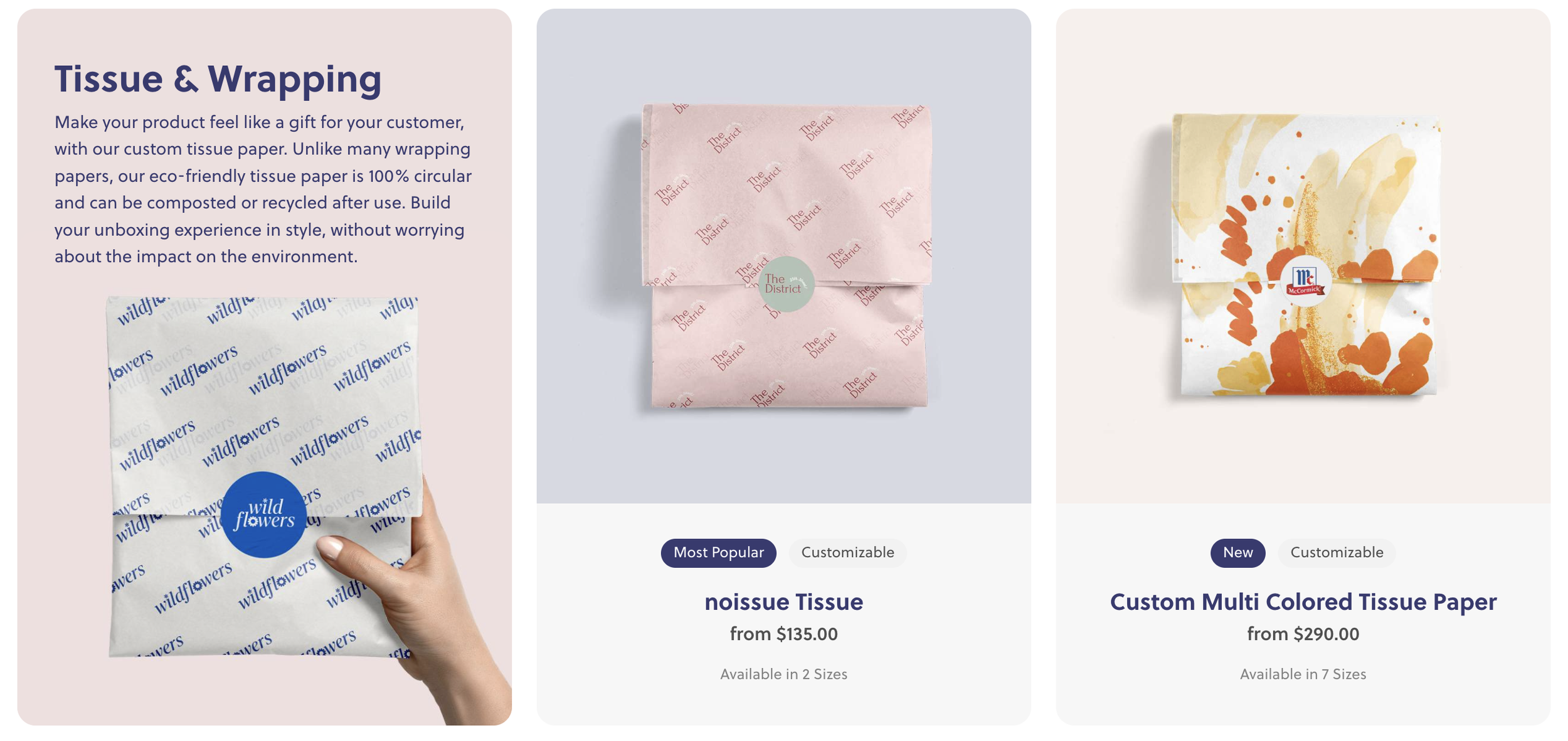A beginner's guide to circular packaging!
In a world that has grown increasingly aware of the environment and mankind’s footprint on it (especially in our capitalistic society), sustainable packaging has become a HUGE topic of interest. More and more businesses of all sizes are answering the call to make conscious decisions in their supply chain. This can include changing their packaging materials from plastic to glass, switching from styrofoam to paper filler, or working with a facility that uses environmentally safe inks. There are many things to consider when looking to do right by the environment with your product-based business, so that’s why I’ve compiled resources that I trust to steer you along the right path.
In this post, my goal is to create a “starter kit” of sorts for businesses looking to learn more and invest in circular packaging for their business. Let’s dive in!
First of all, what is Circular Packaging?
A.k.a. packaging that can be reused, repurposed, recycled, or composted. Imagine how that forms a circle of continuous use in your mind.
Circular packaging’s arch nemesis is Linear Packaging. This refers to packaging that follows the most common commerce model, “Take > Make > Waste”. The shelf life of the packaging is short and only contributes to one thing, your garbage bin.
Click the image above to view a quick 1-2 min. video breaking down Circular Packaging. Following the video is an ah-mazing article on the ins and outs of circular packaging including these topics:
The benefits of circular packaging
what drives the need for it
How you can adopt a circular economy
Is compostable packaging really circular?
How can businesses (like yours!) switch to a circular economy?
Speaking of composting….
The article I mentioned above talks about compostable packaging and if it’s really circular.
Spoiler Alert it’s not. But it's still worth looking into.
"compostable packaging, while sustainable, is still single-use and not circular in nature.”
So, I HIGHLY recommend also reading this article as well “What You Need to Know About Using Compost Facilities”. This article includes topics such as:
What is Composting?
What Are Composting Facilities?
A Look at The Composting Facilities Available In the United States
How to Use Composting Facilities
Industrial vs. Home Composting: What's the Difference?
Do Composting Facilities Accept Compostable Packaging?
How To Be A Responsible Composter – Our Top 3 Tips
As you can tell, it’s a powerhouse of an article for those interested in learning more about compost in the commercial world.
What’s an easy action step I can take today?
Well, let’s start with take a look at bubble wrap. We’ve all known for years that styrofoam is terrible for the environment, taking a whopping 450 years to decompose. But, did you know that bubble wrap is basically styrofoam’s evil and much more dangerous cousin? Bubble wrap takes wait for it…. 1,000 years to decompose!
So let’s ditch it, shall we?
Here are some alternatives to bubblewrap:
Compostable mailers
Corrugated packaging
Biodegradable packing peanuts
Mushroom packaging (IKEA uses this one!)
Seaweed packaging
GreenWrap
Air pillows
Honorable mention Recycled tissue paper (from a design perspective I LOVE this one!)
And of course, this wouldn’t be the helpful resource library I promised without providing you with a link to learn more about all these alternatives. I for one can say that I had no idea some of these existed. Seaweed packaging?! So cool.
Tap the button below to get the full scoop!
Looking to take a bigger step? Let’s take a look at recycled boxes.
If a mailer isn’t going to cut it for your products, then recycled boxes could be a great solution for you! They’re sturdy, reliable, and could save you some money. Win-win-win!
“On its surface, sustainable packaging is often seen as the more expensive alternative to regular cardboard and plastic packaging. However, the value proposition sustainable packaging offers, plus the costs that it saves businesses long-term, show that it’s a viable financial alternative. . . Environmentally-friendly packaging enhances brand reputation and can prove cheaper for your business than you may have thought.” - noissue
How are recycled boxes an affordable environmentally-friendly option?
The Materials Used for Recycled Shipping Boxes are Inexpensive
The Manufacturing of Recycled Boxes Takes Less Effort
The Quality of Your Recycled Shipping Boxes Makes a Big Difference
In this valuable little article, noissue takes a deeper look at recycled boxes as a solution for your packaging needs. Read the full article by clicking here.
What other environmentally-friendly components can you use in your packaging experience?
Our affiliate partner, Noissue offers tons of great options when it comes to packaging! Take a look at their catalog here. They offer tissue paper, stickers, packaging tape, stamps, and so much more to make your packaging experience stand out in the eyes of your customers.
What's next?
So now that you know more about what circular packaging is and a few simple action steps you can take to get started, it’s time to take those steps! Find out which packaging components are right for your products and start gathering design inspiration. Having packaging that you can feel good about ethically and aesthetically is the perfect combo!
If you need help with the design or want to pass it off to a professional, that’s what I do best! Click below to go to my contact form where you can tell me more about your business!
Looking for more information on sustainable (circular) packaging?
Here are some more articles to continue your journey:






